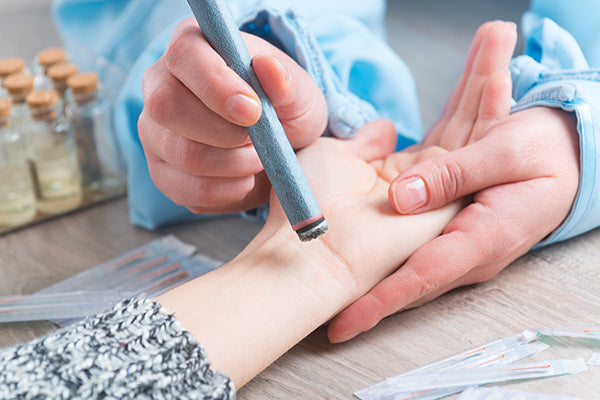Moxibustion is a traditional Chinese medicine technique that has been used for thousands of years across Asia. As you may notice recently, moxibustion is gaining more and more popularity, so you may wonder
what is moxibustion exactly and
how does moxibustion work?

Moxibustion involves burning the Mugwort which enhances healing on a specific acupuncture point to stimulate the flow of qi. Not only does the small herb burn evenly but its oils and aromas also affect the body positively. In fact, there are two types of moxibustion: direct and indirect.
- Direct Moxibustion: A small amount of burnt moxa is deposited on top of an acupuncture point.
- Scarring Direct Moxibustion: The moxa will stay on the acupuncture point until it burns out completely and it can cause scarring after healing and blisters.
- Non-Scarring Moxibustion: The lit moxa is also placed on the acupuncture point, but it will be extinguished before it burns the skin. Patients will feel a pleasant heat penetrating the skin.
- Indirect Moxibustion: It is popular among patients because it is painless and avoids burns. In this case, practitioners will only light one end of the moxa stick and will hold it next to the treated area for several minutes.
-
Moxibustion Acupuncture: This second form of indirect moxibustion involves both acupuncture needles and moxa. The practitioner will insert a needle into an acupoint. Then, moxa is wrapped around the tip of the needle. This helps to focus the heat directly to the point and its surrounding area. After, the moxa and the needles will be removed from the body.
Does Moxibustion hurt?
Besides the scarring direct moxibustion method, the answer is no. Moxibustion does not hurt if it is performed by a professional practitioner. However, if the moxa ash falls on the skin, it might burn but usually practitioners are very careful with this.
What are some Precautions to Moxibustion?
- Be prepared that most moxa can smell like marijuana when it’s burned. Depending on the quality and the grades of the moxa, higher grades moxa causes less smoke and less marijuana scent. To avoid the marijuana smell, we recommend these Zen Smokeless Moxa with a rose scent.

- Moxibustion should never be done on children.
- Moxibustion should not be performed on the face, other sensitive tissues nor on patients with no ability feel heal or pain.
- Moxibustion should not be used on patients who suffer from cold and stagnant situations.
- Patients with respiratory problems should request their practitioner to use smokeless moxa sticks to avoid the smoke.
- During a moxibustion procedure, the practitioner must always remain with the patient.
- Take-home moxa products should have clear written instructions as the practitioner may be liable from the malpractice of the patients (injury and fire).
- Moxa should be properly extinguished with a moxa extinguisher as there might be some smoke hidden underneath the ash.
To find a professional
practitioner who does moxibustion, we recommend Xiao Lei Wang’s acupuncture clinic:
https://acupuncture-clinic.ca/.
If you wish to learn more about moxibustion and acupuncture, we strongly suggest this book,
Chinese Medicine Guide: Acupunture and Moxibustion. You can find more details at
Lierre.ca, a professional
acupuncture needles distributor in Canada.



